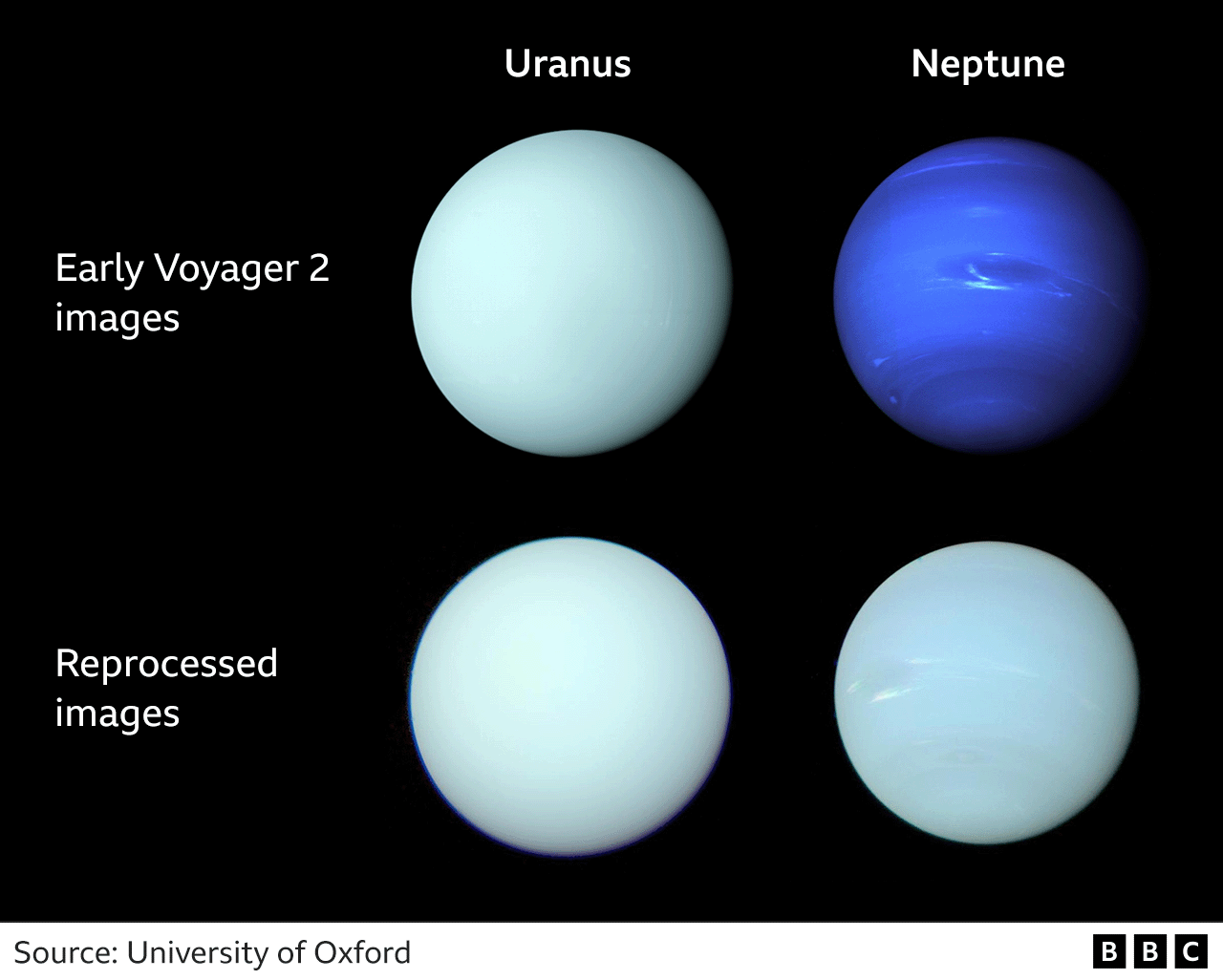ARTICLE AD BOX

By Pallab Ghosh
Science correspondent
Our ideas of the colours of the planets Neptune and Uranus have been wrong, research led by UK astronomers reveals.
Images from a space mission in the 1980s showed Neptune to be a rich blue and Uranus green.
But a study has discovered that the two ice giant planets are both similar shades of greenish blue.
It has emerged that the earlier images of Neptune had been enhanced to show details of the planet's atmosphere, which altered its true colour.
"They did something that I think everyone on Instagram will have done at some time in their life, they tweaked the colours," Prof Catherine Heymans, Astronomer Royal for Scotland and a University of Edinburgh astrophysics professor, told BBC Radio 4's Today.
"They accentuated the blue just to reveal the features that you can see in Neptune's atmosphere, and that's why the image looks very blue, but in reality, Neptune is actually pretty similar to Uranus."
Image source, JULIAN BAUM/SCIENCE PHOTO LIBRARY
Image caption,The earlier images were captured by Nasa's Voyager spacecraft in the 1980s
Astronomers have long known that most modern images of the two planets do not accurately reflect their true colours, according to Prof Patrick Irwin from the University of Oxford, who led the research.
"Even though the artificially saturated colour was known at the time amongst planetary scientists - and the images were released with captions explaining it - that distinction had become lost over time."
Dr Robert Massey, deputy director of the Royal Astronomical Society (RAS), explained that enhancing images was normal procedure in astronomical research.
"You would be foolish to look at an astronomy image and not think it was enhanced. They have to be, because that is how they are processed in order to see things.
"It's not that there was any conspiracy to keep it from the public!"
Prof Irwin and his team processed the original data to produce what is claimed to be ''the most accurate representation yet'' of the colour of both Neptune and Uranus.
The initial misconception arose because images captured of both planets by Nasa's Voyager 2 spacecraft mission recorded its images in three separate colours.
The images were recombined to create the composite colour images, which were not always accurately balanced. The contrast was also strongly enhanced to bring out details in the clouds, bands and winds of the planets. In the case of Neptune, both processes made it bluer than it really was.
In the recent study, the researchers used data from the Hubble Space Telescope Imaging Spectrograph and the Multi Unit Spectroscopic Explorer on the European Southern Observatory's Very Large Telescope.
In both instruments, each pixel is a continuous spectrum of colours which enables the researchers to produce the true colours of both planets.
The analysis revealed that Uranus and Neptune are a similar shade of greenish blue, although researchers found a slight difference. Neptune has a slight hint of additional blue, which the model reveals to be because of a thinner haze layer on that planet.
The study also showed that Uranus appears a little greener at during its summer and winter, when one of its poles is pointed towards the Sun. But during spring and autumn, when the Sun is over the equator, it has a bluer tinge.
The research has been published in the Monthly Notices of the RAS.

 1 year ago
36
1 year ago
36








 English (US) ·
English (US) ·